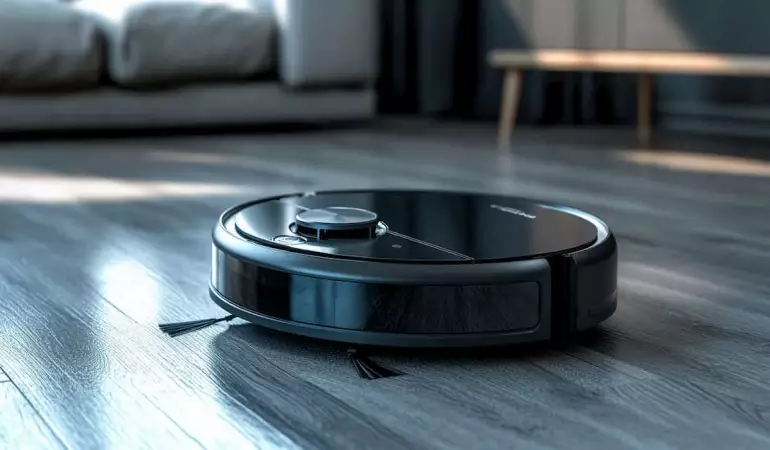How do robotic vacuum cleaners and other similar equipment work? What technologies are used?
In today's society, we expect everything we buy to save us time and make our tasks more convenient. Fortunately, our expectations are justified, as technology improves and devices are brought into our homes that can do almost all the work for us. Among the most popular are robot vacuums, window cleaners, and even window cleaning robots. If you've ever wondered how these smart devices work and what technologies they use, this article is for you!
February 20, 2025 16:34
How does a robot vacuum clean without your help?
A robot vacuum cleaner is a truly irreplaceable homeowner's assistant. The compact device is capable of thoroughly cleaning floors, although it looks like a simple moving box with wheels.
First, a robot vacuum cleaner uses sensors and intelligent, autonomous navigation systems to navigate and create a map of the room. Most modern robot vacuum models have LiDAR ( Light Detection and Ranging ), camera or infrared systems that scan the space, detect obstacles (such as furniture or stairs) and create a virtual map of the room. This map allows the vacuum cleaner to plan a cleaning route methodically and intelligently, rather than randomly driving around the room.
In addition, modern robot vacuums are often paired and controlled via apps on your phone. There you can set a cleaning schedule, select areas that the vacuum should avoid, or even control the device remotely. When the battery runs out, the robot automatically returns to the charging station, and then continues working from where it left off. The most modern, high-end models also have a station that collects debris from the container so that you don’t have to do it yourself.
Window cleaning robot – important work no longer has to be a chore for humans
Traditionally, people would prepare themselves in advance, both physically and emotionally, for window cleaning. Window washing was traditionally an intensive manual task with a cloth and water, but today even this task can be automated.
Let's start with the classic solutions - window cleaners . These are handheld devices that allow you to spray water and/or detergent and clean with one device. They are effective, but still require a person to do everything themselves.
However, technology companies have created a very effective solution for consumers - a window cleaning robot. This device works similarly to a robot vacuum cleaner, but also has many unique technological solutions. A window cleaning robot is attached to a window, uses suction mechanisms or magnets to prevent it from slipping, and special sensors detect window frames and ensure that the robot does not move outside their boundaries.
First, the robot firmly attaches itself to the window and moves along its surface, cleaning dust and dirt. It can use suction cups or a special magnetic plate that is attached to the other side of the window. Then, water is sprayed and the surface is wiped. Robots move quite slowly when cleaning windows so as not to damage the surface and to perform the task thoroughly.
What technologies have the greatest impact on the efficiency of these devices?
An integral part of how robot vacuums and window cleaning robots work is artificial intelligence (AI). It analyzes data from sensors, optimizes its path, and even learns from mistakes. For example, if a robot vacuum trips on a carpet, it will move more carefully in that area next time.
In addition to AI, battery technology plays an important role. Lithium-ion batteries allow devices to work for up to several hours without recharging, and fast charging features reduce downtime.




